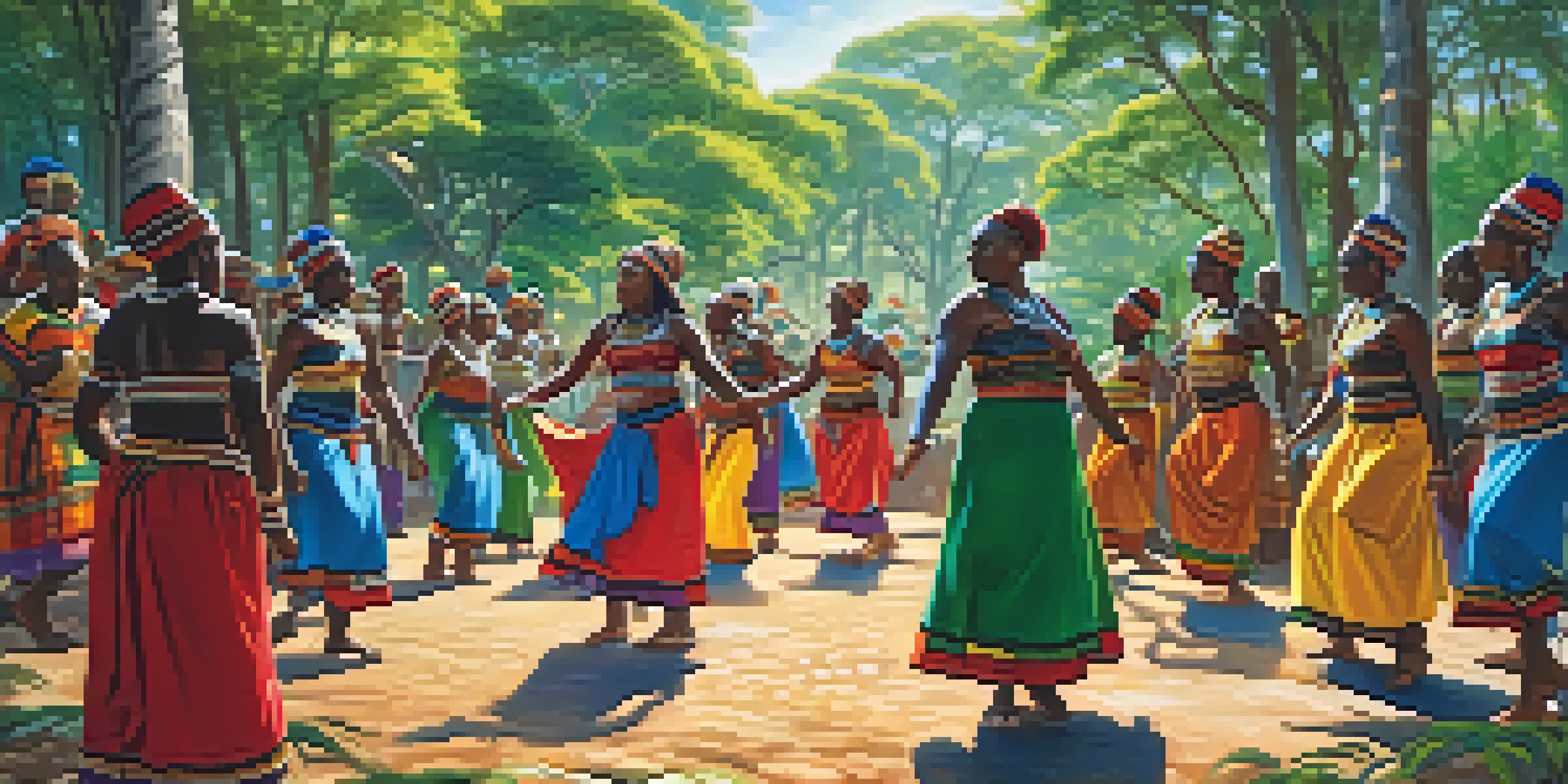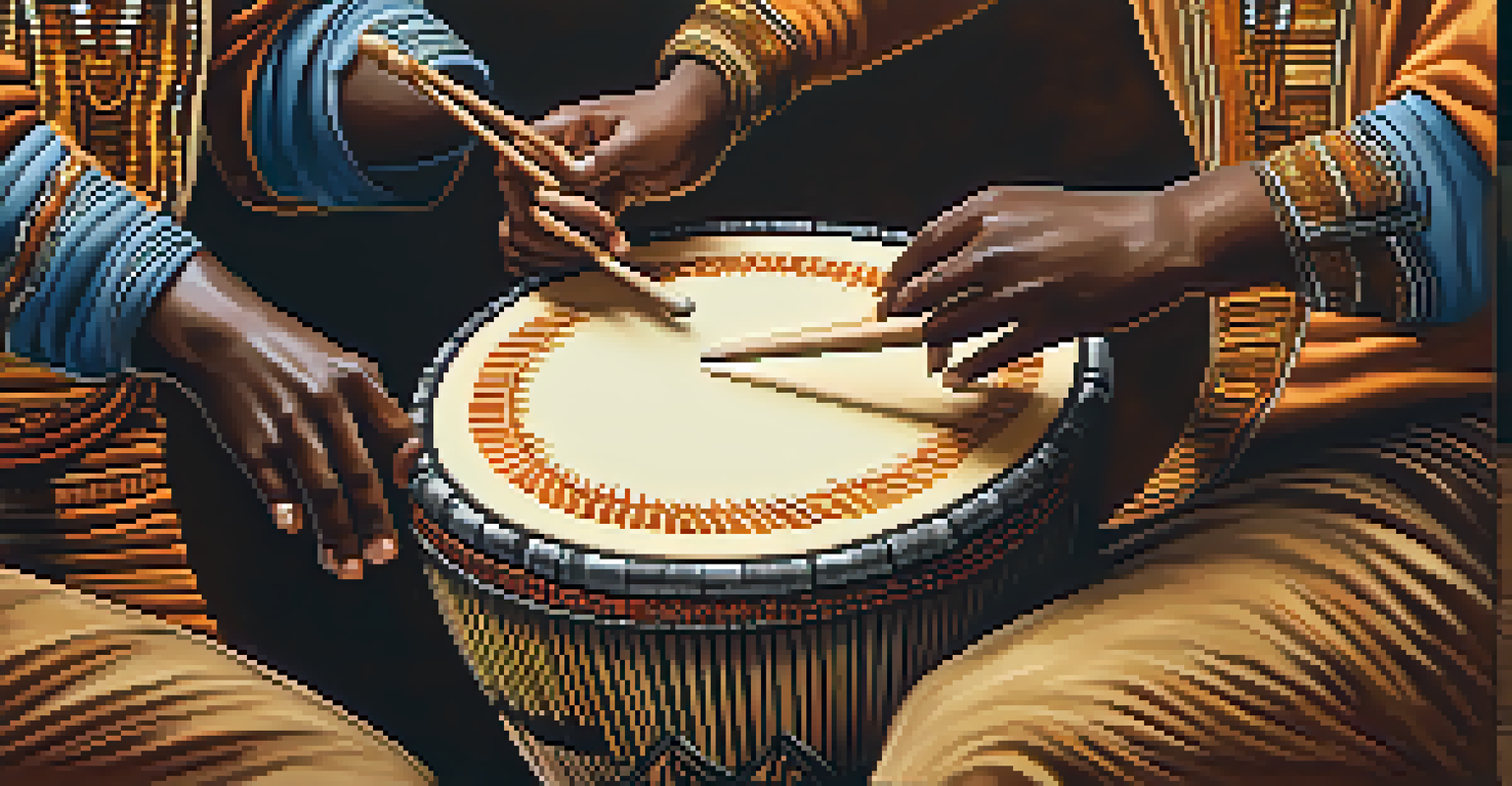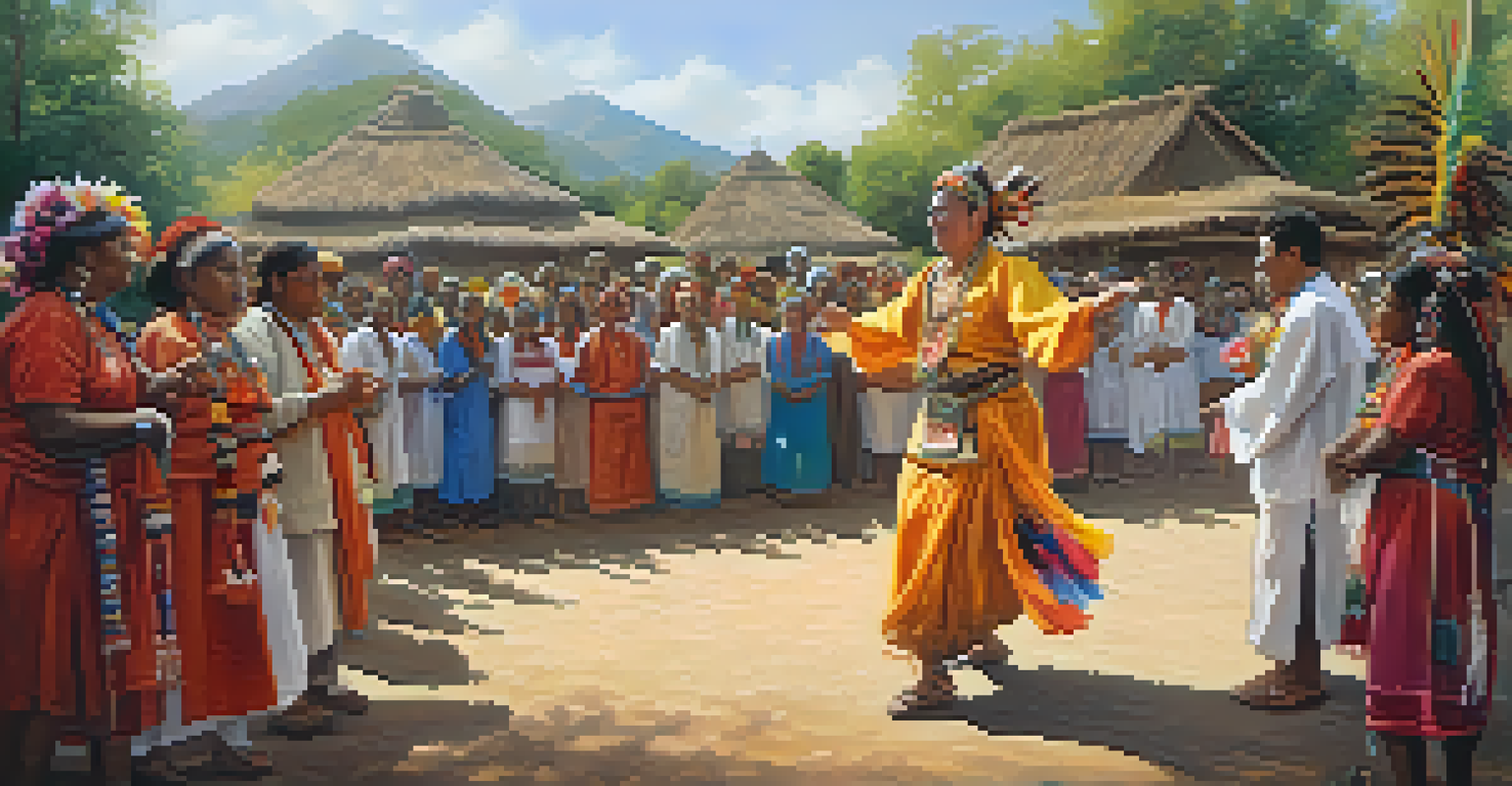The Significance of Dance in African Tribal Healing Practices

Understanding African Tribal Healing Practices
African tribal healing practices are deeply rooted in cultural beliefs and community traditions. These practices often blend spiritual and physical elements, aiming to restore balance within the individual and the community. At the heart of many of these healing methods lies the connection between body, mind, and spirit, emphasizing the importance of holistic approaches to health.
Dance is the hidden language of the soul.
In many tribes, healers are not just medical practitioners; they are also spiritual leaders. They employ a variety of techniques that may include herbal medicine, rituals, and, significantly, dance. Dance acts as a medium that communicates the healing intentions and brings people together, fostering a sense of unity and support.
Understanding these practices is crucial because they highlight how different cultures prioritize well-being. While Western medicine often focuses on the physical body, African healing traditions remind us of the importance of cultural context, emotional health, and spiritual fulfillment in achieving overall wellness.
The Connection Between Dance and Healing
Dance is a powerful form of expression that transcends language and cultural barriers. In African tribal healing, dance is used as a therapeutic tool to channel emotions and release pent-up energies. It serves as a safe space for individuals to express their traumas and joys, which can be therapeutic in itself.

Moreover, the physical movements involved in dance can stimulate the body, enhancing circulation and promoting relaxation. This can help ease tension and stress, making it an integral part of the healing process. The rhythmic patterns of dance are often said to synchronize with the heartbeat, creating a deep connection between the dancer and their surroundings.
Holistic Healing Through Dance
African tribal healing practices emphasize the integration of body, mind, and spirit, with dance playing a crucial role in facilitating emotional and physical well-being.
In many healing ceremonies, dance is not just an individual act; it fosters community participation. When people come together to dance, they create a supportive environment, which can amplify the healing experience. This sense of belonging and collective energy is often what makes these practices so effective.
Rituals and Dance in Healing Ceremonies
Healing ceremonies in African tribes often integrate dance as a central component. These rituals are meticulously designed to honor ancestors, invoke spirits, and seek guidance for healing. Each dance has its own significance and is often accompanied by specific songs, instruments, and costumes that add layers of meaning to the experience.
Healing is a matter of time, but it is sometimes also a matter of opportunity.
For instance, certain dances may be performed to celebrate a successful recovery, while others might be aimed at warding off negative energies or spirits. The choreography often reflects the narrative of the healing process, creating a visual representation of the journey from illness to wellness. This storytelling aspect makes the experience more relatable and engaging for participants.
The use of dance in these rituals also reinforces the cultural identity of the community. It serves as a reminder of shared values and collective history, binding individuals together through a common purpose. This connection to culture not only aids in healing but also strengthens community ties.
The Role of Music in Dance and Healing
Music plays a crucial role in African dance and healing practices, acting as both a rhythm and a guide for movement. Traditional instruments, such as drums, rattles, and flutes, create sounds that resonate with the dancers and influence their movements. This relationship between music and dance is essential for creating an immersive healing experience.
The rhythms produced by these instruments often correspond to the emotional states of the participants, helping to facilitate a deeper connection to the dance. Different beats can evoke various feelings, whether it be joy, sorrow, or a sense of release. This ability to tap into emotions through music makes it a powerful ally in the healing process.
Community and Connection in Healing
Dance acts as a powerful social activity that fosters community bonds, providing collective support that enhances individual healing experiences.
Furthermore, music often serves as a bridge between the physical and spiritual realms. In many ceremonies, songs are believed to carry prayers or messages to the ancestors and spirits, enhancing the spiritual dimension of the healing. This intertwining of music, dance, and spirituality exemplifies the richness of African tribal healing practices.
Dance as a Form of Community Bonding
In African cultures, dance is not merely a performance; it is a vital social activity that strengthens community bonds. When people come together to dance, they foster a sense of belonging and connection. This communal aspect of dance is particularly important during healing ceremonies, where collective support can amplify individual healing experiences.
During these gatherings, participants often share stories, laughter, and even tears, creating an environment that encourages vulnerability and openness. This shared experience can help individuals feel less isolated in their struggles, promoting emotional healing. The act of dancing together can also reinforce social ties, creating a network of support that extends beyond the ceremony itself.
In essence, dance serves as a unifying force within communities. It reminds individuals that they are not alone in their journeys, and that support is always available. This sense of community is integral to the healing process, making dance a powerful tool for both personal and collective well-being.
Modern Interpretations of Traditional Dance Healing
As globalization continues to blend cultures, traditional African dance healing practices are being interpreted in new ways. Modern practitioners often incorporate elements of contemporary dance, fusion styles, and even therapy-based approaches to reach a broader audience. This evolution allows traditional practices to remain relevant while embracing new ideas.
For instance, some therapists integrate dance into their practices, using it as a form of movement therapy to address various mental health issues. These modern adaptations can introduce the healing benefits of dance to individuals who might not otherwise engage with traditional practices. It creates an opportunity for cross-cultural exchange and learning.
Modern Adaptations of Traditional Practices
Contemporary interpretations of African dance healing blend traditional methods with modern therapy approaches, making these practices accessible while respecting their cultural roots.
However, it's essential to approach these modern interpretations with respect for the original cultural meanings. The challenge lies in honoring the traditional roots while making these practices accessible to a contemporary audience. By doing so, we can appreciate the richness of African tribal healing and its transformative power in today’s world.
Conclusion: The Enduring Legacy of Dance in Healing
The significance of dance in African tribal healing practices is profound and multifaceted. It serves as a therapeutic tool, a means of community bonding, and a spiritual connection to ancestors. As we explore the depths of these traditions, we gain insight into the holistic nature of health and well-being.
In understanding the role of dance, we also acknowledge the importance of culture in shaping our approaches to healing. The lessons learned from these practices can inspire us to appreciate the interconnectedness of mind, body, and spirit, regardless of our cultural backgrounds. It encourages us to embrace diverse healing modalities that can enrich our lives.

Ultimately, the enduring legacy of dance in African tribal healing reminds us of the power of movement, music, and community. As we move forward, let’s carry these lessons with us, honoring the traditions that have shaped so many lives and continue to inspire healing across the globe.